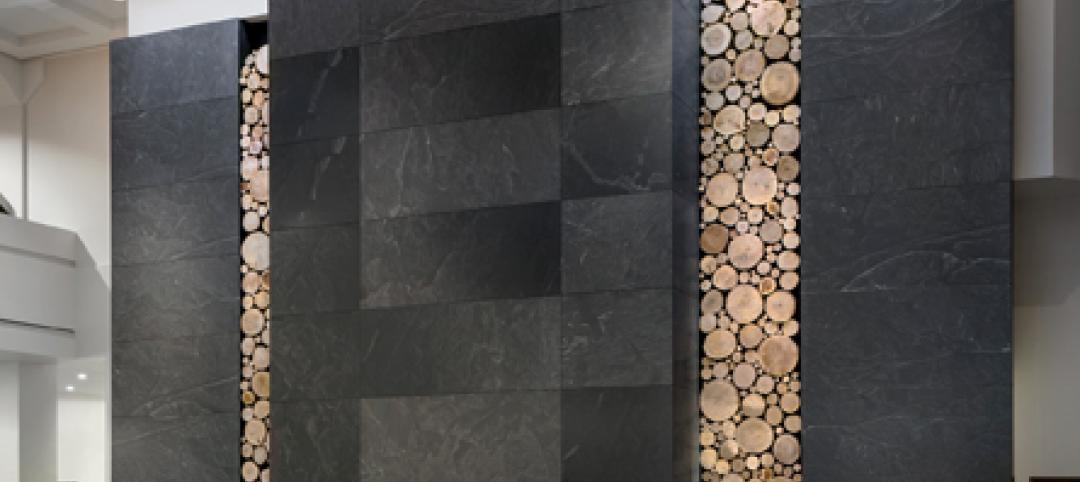From modular schools to a “test” classroom, green construction in the K-12 schools market has taken on many forms in the past decade. With school districts having to keep the needs of students in balance with limited budget flexibility, Building Teams around the country are finding ways to bring green schools into reality, whether by new construction or extensive renovation.
Chula Vista, Calif., charter school High Tech High was advised by San Diego-based general contractor BYCOR to turn to modular construction for its campus. Faced with a tight deadline and strict budget, the project also was working toward a variety of green goals, including LEED.
Modular manufacturer Williams Scotsman was brought on board to coordinate the integration of modular construction with the overall project; 59 modules totaling 32,807 sf were provided for the school, which was awarded LEED for Schools Gold certification.
In 2011 Dills Architects and McKenzie Construction completed the 94,231-sf College Park Elementary School in Virginia Beach, Va., with LEED Platinum certification in mind and net-zero stormwater management to boot. To meet the latter goal, the Building Team specified green vegetative roofing and cisterns for rainwater collection.
One Firm, multiple green certifications
Design firm SHW Group, Plano, Texas, draws from a variety of certification programs and rating systems to help build green.
The 105,000-sf Gloria Marshall Elementary School in Spring, Texas, was the first school in the Houston area to use geothermal heating and cooling. In addition to LEED Gold certification, the school received an Energy Star rating and was designed to meet Texas/CHPS (Collaborative for High Performance Schools) criteria.
The Fine Arts Facility at the 23,700-sf McCallum High School in Austin was the first educational facility in Texas to receive a five-star rating from the Austin Energy Green Building Program, the nation’s first comprehensive green building program. SHW saved the school district nearly $1 million by converting existing art rooms into science labs, building a new fine arts facility for theatre and art, and connecting the existing school with the fine arts facility.
The school also includes a “breathable” membrane that uses metal wall panels to keep moisture from getting trapped inside the wall. It is anticipated thait this will result in improved energy efficiency and indoor air quality for the school.
Green construction has also spread to the U.S. Military Academy Preparatory School at West Point, N.Y. The elite prep school moved to its new location after the former site in Fort Monmouth, N.J., was closed as part of the 2005 Base Realignment and Closure Act. The Building Team of STV (architect/engineer) and J. Kokolakis Contracting (GC) earned LEED Gold for the new facility. Environmentally conscious building practices included the procurement of materials with high recycled content, selling unused building materials to nearby manufacturers, and diverting 98.5% of C&D waste from landfill.
Many school districts, notably in California, are simultaneously implementing green building practices while using the buildings themselves to teach environmental principles to students. One such classroom, at the Davis Magnet School in Costa Mesa, was retrofitted with environmentally friendly flooring, furnishes, and paints, as well as high-performance lighting and a new ventilation system. A neighboring classroom was left unimproved.
The resulting experiment has students comparing the two classrooms to learn firsthand the benefits of sustainable educational environments. What’s more, the “greenovation,” according to Irvine-based architecture firm LPA Inc. and the Orange County chapter of the U.S. Green Building Council, came at zero cost to the school, having been funded through private donations. +
Related Stories
| Nov 13, 2012
Sto Corp. announces appointment of new CMO
Bottema will be responsible for all corporate marketing, product management and sales activities.
| Nov 13, 2012
2012 LEED for Homes Award recipients announced
USGBC recognizes excellence in the green residential building community at its Greenbuild Conference & Expo in San Francisco
| Nov 12, 2012
PCI Skanska celebrates 40-year anniversary
Since its creation, PCI Skanska has provided EPC services to clients for more than 40 years.
| Nov 12, 2012
AISC launches 'Night School' online educational program
The program's weekly webinar sessions offer structural engineers a great opportunity to enhance their professional development online while accommodating their schedules.
| Nov 11, 2012
Under40 Leadership Summit draws 71 young leaders to Chicago
More than 70 young—that is, under age 40—architects, engineers, and construction professionals descended on Chicago in early October with one thought in mind: to learn how to “create with clarity.”
| Nov 11, 2012
AIA: Building Envelope
Preventing and treating failure in glazed curtain wall systems. Earn 1.0 AIA/CES learning units by studying this article and successfully completing the online exam.
| Nov 11, 2012
Greenbuild 2012 Report: Hospitality
Hotel boom signals good news for greener lodging facilities
| Nov 11, 2012
Greenbuild 2012 Report: Government & Military
Public sector remains a bastion of sustainability
| Nov 11, 2012
Greenbuild 2012 Report: Healthcare
Green medical facilities extend beyond hospital walls
| Nov 11, 2012
Greenbuild 2012 Report: Multifamily
Sustainably designed apartments are apples of developers’ eyes
















